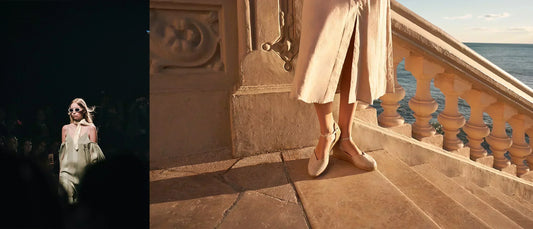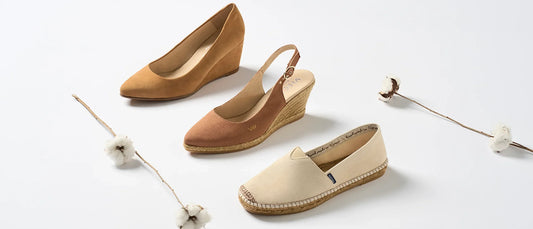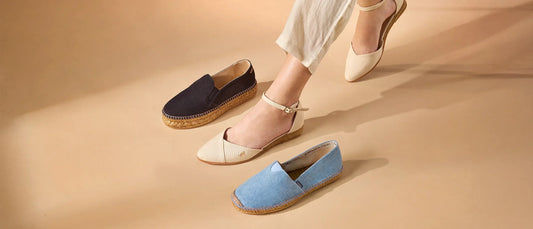
Meet Jose Miguel: making espadrilles the old fashioned way for almost 50 years
Handmade with love and care
At Viscata, everything we do, we do with love and care. And a deep respect for tradition and nature. So, we thought we’d have a little chat with Jose Miguel to get some insight into what makes this dedicated craftsman so devoted to his trade.
How long have you been making shoes?
I’ve been making shoes by hand since I was 20 years old when I left the military. When I was a child, my Dad had many trades and one of them was making traditional espadrilles, so I’ve been doing this since I was a child - that’s a long time.
What is it that inspires you to keep the traditions alive?
When I was a child, Spanish espadrilles were always a part of my life. As well as my Dad, my mother also made them. One of my great childhood memories is of her in the house, with her apron on, making authentic, handmade espadrilles. My whole life has been dedicated to the art of making espadrilles and I intend to carry on doing it as long as I can. That’s why it’s so important to me to keep the authentic techniques and the tradition alive.

What are the biggest challenges you face in making these shoes?
The process is long and laborious and it’s hard work. It’s easy to take shortcuts or to engage more machinery, but there’s nothing more glorious than watching an authentic pair of handmade espadrilles come to life. It’s hard work and it requires real skill and knowledge which is best passed down from person to person.
What are the techniques that separate your shoes from the rest?
We start our process from nature with the sowing and harvesting of the raw material itself, natural jute. Once the natural fibre has been harvested, it’s dried and spun to become the base of the sole of our espadrilles. Everything is handmade in the traditional way. Most things remain the same as they always were, but the making of the braid has evolved a little bit over the years. These braids are no longer entirely done by hand but we have a simple hand operated machine process that makes life a bit easier.
Weaving
The next step is to take the shoes to the weaving bench where we do the weaving. Here, there has been some modernization, but the process is generally unchanged for centuries. Once the weaving has been completed, we move on to sewing the sole, which is slightly compressed. The machine we use has a big needle and a bodkin so that it doesn’t break. We use this system to make a hole before stitching the sole on.
Applying heat and building the espadrilles
After that, we have to vulcanize the sole to compress it in our special presses. This requires heat and pressure to get it bonded tightly. Then we apply the design which is provided by our design team. The next phase is assembling the espadrille itself, which involves attaching the fabric upper (which could be cloth or leather) to the jute sole. All of this is done by hand in the same way as it has always been done. This is a truly arduous task and is very laborious.
Giving the espadrille its shape
Once the basic espadrille has been assembled, we move them to the moulding machine inside the workshop. This is what gives your shoes the right fit. We insert the shoe into one of our two moulding machines and then apply heat and pressure. Once done, we then hammer the shoes down firmly, leaving the shape well formed and distinctive. The final phase involves passing through a long chain of workers who cut off any loose threads, check the shoes, clean them, wrap them in paper. Once they’re satisfied that everything’s just right they place the final product in the box and attach labels. Then they’re off to the warehouse, which is the final stage before getting them onto your feet.

What makes an authentic espadrille?
It’s passion that makes a good espadrille. And a respect for tradition. Making espadrilles is everything for me. With respect to your foot, the shoe is everything. It’s history. It’s tradition. It’s knowledge that has always been in this region. This is all about keeping traditional handmade craftsmanship alive and preserving the artisan traditions of our region. It’s a whole culture.
How does the future look?
The exciting thing is that espadrilles are no longer just traditional Spanish shoes. These days you can wear them with any sorts of clothes and for any occasion. You can wear them to work, for a walk or as casual wear. That’s a great step forward, I think. These shoes have been around for centuries and they’ve adapted to fashion and to suit the times we live in. They’re really attractive shoes and they’ve been recognized as such. This is a major step forward. And it’s a very important one.
Do you have any secrets you can share?
If I shared them, they wouldn’t be secrets. For us, quality materials, craftsmanship and tradition are what make our shoes different. And the love and passion that we put into every pair. Touching and feeling the natural materials during the production process is a special thing and watching these beautiful shoes make people happy is a wonderful gift.
Thank you for keeping it real
So, Viscata would like to say a big thank you to Jose Miguel and all the other artisan shoemakers who work hard to keep our Viscata espadrilles authentic and true. We know our customers value the tradition, the love, the care and the constant attention that making our shoes by hand imparts. We think this is what sets us apart from some of the other brands where automation and mass production overrides tradition and authenticity. And, since every pair is born from nature and crafted with real love, the quality shines through in every pair. We call it character.
For more about our sustainability policies and how we apply the principles of slow fashion to everything we do, click here.


